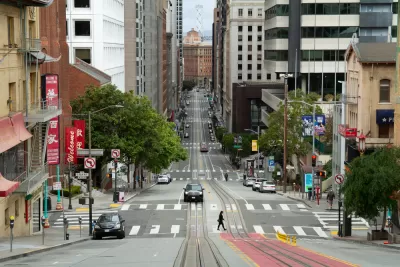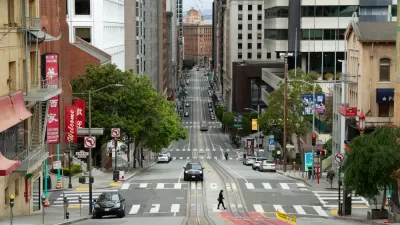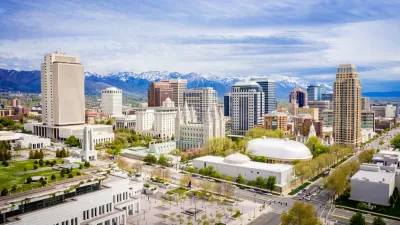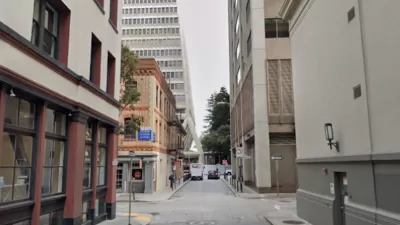The recovery of U.S. downtowns is happening at widely different paces depending on which city you consider.

A recent analysis by the Institute of Governmental Studies at the University of California, Berkeley compares the recovery of downtowns using new data provided by mobile phones to expand beyond the typical indicators of downtown vitality: office vacancy rates, public transit ridership, and retail spending.
The study finds wide variation in downtown recoveries, ranging from a low of 31 percent of pre-pandemic levels in San Francisco to a high of 155 percent in Salt Lake City. The key factors influencing these outcomes, according to the study, are “population and business densities, commuter mode shares particularly high car use, along with presence of industry sectors that are continuing to support remote work (such as tech and finance),” according to the policy brief that supplements an infographic-oriented website to share the information released with the study.
The release of the study has inspired some local media coverage, including an article by Mike Rogoway for the Oregonian examining Portland, Oregon’s “sluggish” recovery (only San Francisco and Cleveland fared worse, according to the study). An article by Snejana Farberov for the New York Post was quick to point out how many cities are doing worse than New York recovering from the pandemic. An article by Roland Li for the San Francisco Chronicle recently made a similar point without citing the Berkeley study.
For more research into the uneven recovery from the pandemic, see also research published by the Brookings Institution in June 2022, which also identifies winners and losers among metropolitan areas in the new, post-pandemic normal.
FULL STORY: Death of Downtown?

Study: Maui’s Plan to Convert Vacation Rentals to Long-Term Housing Could Cause Nearly $1 Billion Economic Loss
The plan would reduce visitor accommodation by 25,% resulting in 1,900 jobs lost.

North Texas Transit Leaders Tout Benefits of TOD for Growing Region
At a summit focused on transit-oriented development, policymakers discussed how North Texas’ expanded light rail system can serve as a tool for economic growth.

Using Old Oil and Gas Wells for Green Energy Storage
Penn State researchers have found that repurposing abandoned oil and gas wells for geothermal-assisted compressed-air energy storage can boost efficiency, reduce environmental risks, and support clean energy and job transitions.

Opinion: DC Encampment Sweeps Hide, but Don’t Solve, Homelessness
President Trump recently ordered the clearing of encampments built by unhoused people on federal land in Washington, D.C.

Santa Barbara Could Build Housing on County Land
County supervisors moved forward a proposal to build workforce housing on two county-owned parcels.

San Mateo Formally Opposes Freeway Project
The city council will send a letter to Caltrans urging the agency to reconsider a plan to expand the 101 through the city of San Mateo.
Urban Design for Planners 1: Software Tools
This six-course series explores essential urban design concepts using open source software and equips planners with the tools they need to participate fully in the urban design process.
Planning for Universal Design
Learn the tools for implementing Universal Design in planning regulations.
Ascent Environmental
Borough of Carlisle
Institute for Housing and Urban Development Studies (IHS)
City of Grandview
Harvard GSD Executive Education
Toledo-Lucas County Plan Commissions
Salt Lake City
NYU Wagner Graduate School of Public Service





























